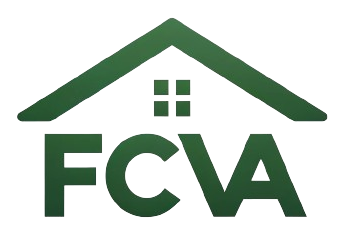What To Fix Vs Skip Before Selling As Is
Have you found yourself wondering what repairs to make before selling your home as is? This question plagues many homeowners seeking to sell quickly while also maximizing their returns. Navigating the complexities of repairs and updates can feel overwhelming, especially during urgent life transitions. Rather than getting lost in endless to-do lists, you can approach the selling process with clarity and confidence.
In this guide, you’ll learn practical insights into what you should fix versus what you can skip when selling your home as is. This understanding will lead to smarter decisions and potentially less stress during your transition.
Understanding the “As Is” Sale
Selling a property as is means you are selling the home in its current condition, without making any repairs or renovations. This method is attractive to many sellers, especially those facing urgent circumstances such as foreclosures, job relocations, or inheritances. However, it’s still vital to assess which repairs could make a significant difference in your sale.
The Benefits of Selling “As Is”
You might be contemplating the idea of selling your property as is for several reasons:
- Speed: You won’t need to spend weeks or months fixing things, thus expediting the sale process.
- Cost-Saving: You can avoid the financial burden of home repairs and renovations that may exceed your budget.
- Less Stress: With fewer tasks on your plate, you can focus on transitioning to your next phase in life.
While these benefits are substantial, knowing what to prioritize can help you maximize your home’s appeal while minimizing additional stress.
Key Repairs to Consider Making
Although you’re selling as is, there are certain repairs that can add significant value or make your home more appealing to prospective buyers. Let’s take a closer look at areas that often yield a great return on investment.
Curb Appeal Enhancements
First impressions matter, and improving your curb appeal can make a considerable difference. Here are some quick fixes you might consider:
- Lawn Care: Simple tasks like mowing, weeding, and adding fresh mulch can dramatically enhance the front yard.
- Landscaping: A few colorful plants or well-placed flowers could brighten up your exterior and attract attention.
- Exterior Cleaning: Pressure washing the siding, driveway, and walkways can revitalize your home’s exterior.
Investing a little time and effort in curb appeal can create an inviting atmosphere that catches the eyes of potential buyers.
Addressing Safety Issues
When it comes to safety, it’s best not to skip any concerns. Buyers will likely shy away from homes with unresolved safety issues. Key areas to focus on include:
- Electrical Systems: If you have any flickering lights or outdated wiring, addressing these can reassure buyers about the safety of the home.
- Plumbing Problems: Leaks or slow drains can deter buyers. Even if minor, fixing these issues could give your buyers peace of mind.
- Structural Repairs: Pay attention to visible cracks in the walls or foundation. Addressing these could prevent negotiations from falling through.
Buyers often perform home inspections, and major safety issues could lead to buyers walking away altogether, so it’s smart to address these.
Minor Cosmetic Updates
While you may think cosmetics don’t matter, small updates can go a long way in elevating the home’s overall appeal without requiring extensive investment. Here are some simple updates to consider:
- Fresh Paint: Repainting rooms in neutral colors can make spaces feel larger and more inviting.
- Lighting Fixtures: Updating outdated or worn light fixtures can brighten a room and create a modern feel.
- Hardware Replacement: Switching out old cabinet handles or faucets can provide an instant upgrade at a low cost.
These minor changes also signal to buyers that you’ve cared for the property, which could lead to a better offer.
What to Skip and Leave for the Next Owner
While some repairs can add value, there are several tasks you might consider avoiding entirely. Let’s explore areas that could likely be left untouched.
Major Renovations
It may be tempting to undertake significant renovations to increase your home’s value, but this can be a costly and time-consuming endeavor. Here’s what to avoid:
- Full Kitchen Remodel: Although it’s often cited as a major value-add, a complete kitchen overhaul is expensive and may not return the investment.
- Bathroom Renovations: Similar to the kitchen, bathroom updates can be costly, and buyers often prefer to renovate according to their tastes.
- Room Additions: Unless absolutely necessary for safety or space, room additions can take a significant amount of time and money, which you may not have.
Investing in these major projects when selling as is may not yield the returns you hope for, especially when the market is flooded with similar homes.
Cosmetic Changes That Won’t Pay Off
While some cosmetic improvements can work wonders, there are changes that might not yield an adequate return considering the time and effort invested. Examples include:
- Over-Personalized Decor: You may love that bold wallpaper or custom paint, but it may not appeal to a wider audience. Buyers often prefer a neutral palette that allows them to envision their style.
- Expensive Flooring: Luxury flooring options may not provide the expected benefit in value. Standard and simple flooring often suffices in as-is sales.
- High-End Fixtures: Installing high-end fixtures may not correlate with a higher selling price. Buyers focused on utility may overlook these when making considerations.
It’s crucial to recognize where your investment will meet the interests of potential buyers and where it might fall flat.
Fixing the Important, Not the Perfect
While you may want your home to be in tip-top shape, it’s important to remember that perfect is often the enemy of good. Focus on what will truly facilitate the sale and leave perfectionism behind. Sometimes, it’s about finding the balance between what needs to be done and what can wait.
Repairing Key Systems Over Aesthetic Enhancements
When selling as is, the focus should be on systems rather than aesthetics. Ensure that the major systems are functional and safe:
- Heating and Cooling Systems: A working HVAC system is a big plus and can make all the difference. Repair if it’s malfunctioning.
- Windows and Doors: Ensure they open and close seamlessly, providing functionality and security. Avoid extensive upgrades but fix any malfunctions.
- Roof and Gutters: Fix or replace sections that need attention. The roof can be a deal-breaker for many buyers, so it’s worth addressing.
These systems, while perhaps not visually appealing, play a critical role in a buyer’s decision-making process.
Utilizing the Right Strategy: Cash Offers vs. Traditional Listings
As you navigate the process of selling as is, consider how you want to approach potential buyers. One option is to seek cash offers, which can expedite the process significantly. Alternatively, traditional listings might provide an opportunity to attract buyers who see potential in fixer-uppers.
Speed of Cash Offers
Cash offers offer several advantages that keep the process efficient:
- Fewer Contingencies: Cash buyers often have less stringent requirements, which can simplify the process.
- Faster Closures: Selling for cash can often lead to quicker closings, which is beneficial if you need to move quickly.
- Minimal Repairs Required: Cash buyers are generally more willing to overlook smaller issues, which aligns well with an as-is sale.
The Potential of Traditional Listings
While cash offers can streamline the selling process, traditional listings provide their own set of advantages:
- Wider Buyer Pool: By listing traditionally, you can attract buyers who might be interested in taking on a project.
- Possibility of Higher Offers: Depending on the market, traditional listings could yield higher sales prices if buyers see potential for renovations.
However, you must weigh the potential longer time frames of traditional listings against your urgency to sell.
Conclusion: Crafting Your Best Approach
Selling a home as is does not mean abandoning the concept of value altogether. Instead, it involves strategically assessing which repairs add clarity and appeal while identifying unnecessary projects. By understanding the balance between important fixes and tasks that can be skipped, you pave the way for a smoother sale.
As you prepare to sell your home, remember the importance of focusing your time and energy on repairs that enhance safety and curb appeal while avoiding the potential pitfalls of expensive renovations. The goal is a swift, rewarding sale that aligns with your needs, whether through cash offers or traditional listings.
Whether you’re navigating personal circumstances or simply seeking to move on, your journey can feel less overwhelming when approached with informed choices. Aim to set the stage with practical repairs and a clear strategy, and you’ll be ready to transition into your next chapter with confidence.
Ready to sell your house fast in Virginia? FastCashVA makes it simple, fast, and hassle-free.
Get your cash offer now or contact us today to learn how we can help you sell your house as-is for cash!
Disclosure: As an Amazon Associate, I earn from qualifying purchases.



